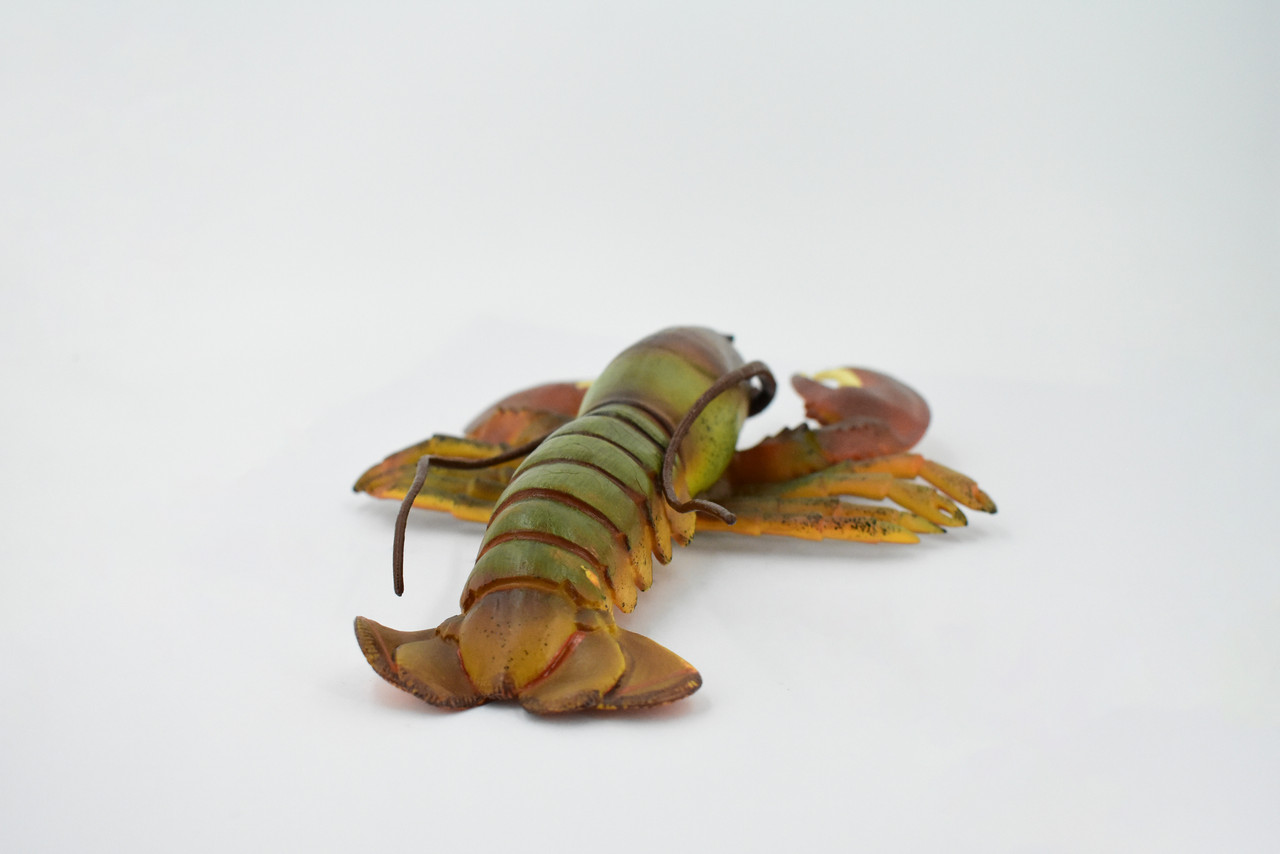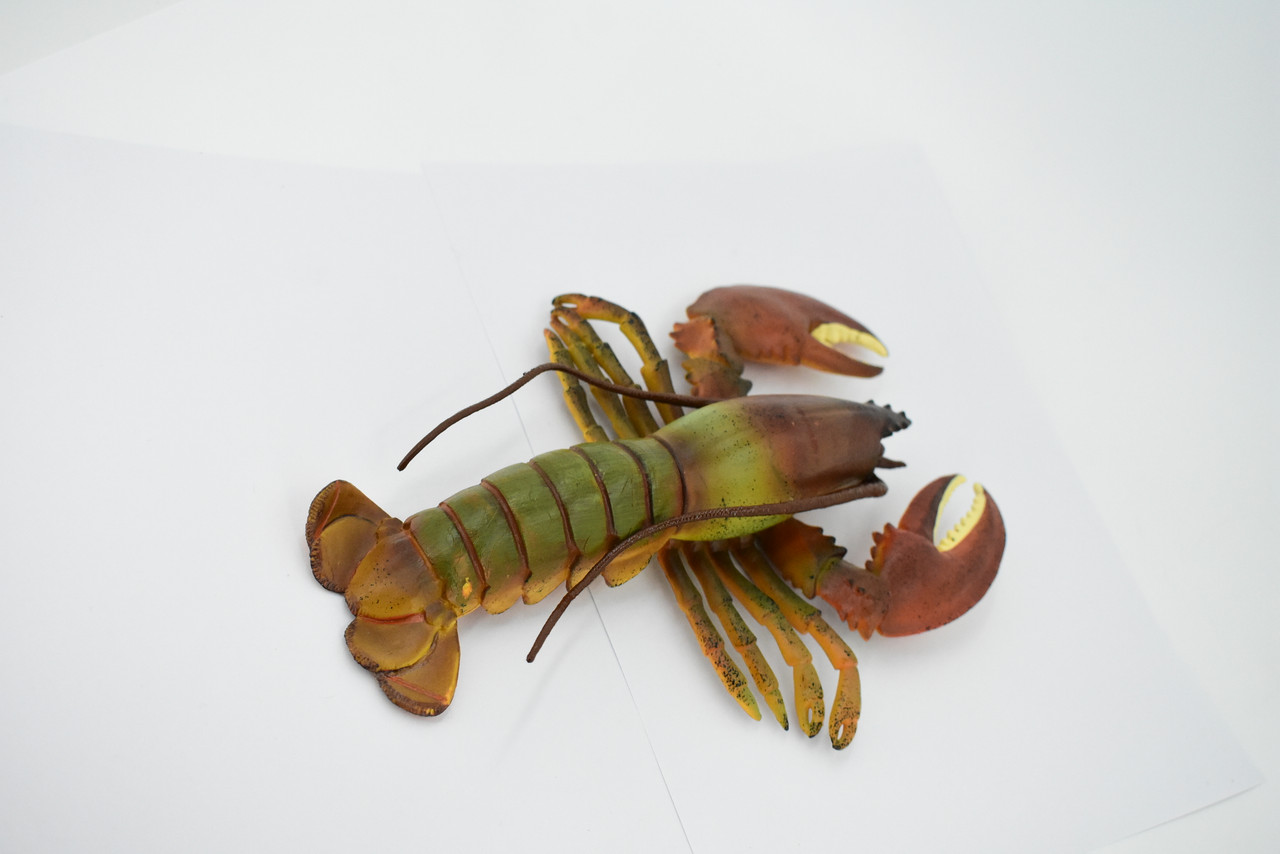Product Description
You might think that all lobsters are bright red, but they only turn that color after they've been cooked for dinner. Lobsters are normally a blend of brown, green, and red, although some lobsters are blue or white. Visit the Aquarium's rare blue and white lobsters to see for yourself.
Lobsters are invertebrates with a hard protective exoskeleton. Like most arthropods, lobsters must shed to grow, which leaves them vulnerable. During the shedding process, several species change color. Lobsters have eight walking legs; the front three pairs bear claws, the first of which are larger than the others. The front pincers are also biologically considered legs, so they belong in the order Decapods ("ten-footed"). Although lobsters are largely bilaterally symmetrical like most other arthropods, some genera possess unequal, specialized claws.
Lobster anatomy includes two main body parts: the cephalothorax and the abdomen. The cephalothorax fuses the head and the thorax, both of which are covered by a chitinous carapace. The lobster's head bears antennae, antennules, mandibles, the first and second maxillae. The head also bears the (usually stalked) compound eyes. Because lobsters live in murky environments at the bottom of the ocean, they mostly use their antennae as sensors. The lobster eye has a reflective structure above a convex retina. In contrast, most complex eyes use refractive ray concentrators (lenses) and a concave retina. The lobster's thorax is composed of maxillipeds, appendages that function primarily as mouthparts, and pereiopods, appendages that serve for walking and for gathering food. The abdomen includes pleopods (also known as swimmerets), used for swimming, as well as the tail fan, composed of uropods and the telson.
Lobsters are a family (Nephropidae, synonym Homaridae) of marine crustaceans. They have long bodies with muscular tails and live in crevices or burrows on the sea floor. Three of their five pairs of legs have claws, including the first pair, which are usually much larger than the others. Highly prized as seafood, lobsters are economically important and are often one of the most profitable commodities in the coastal areas they populate. Commercially important species include two species of Homarus from the northern Atlantic Ocean and scampi (which look more like a shrimp, or a "mini lobster")—the Northern Hemisphere genus Nephrops and the Southern Hemisphere genus Metanephrops.
Collectible Wildlife Gifts is the market leader in providing high quality, realistic toys of all types! Every one of our items is heavily inspected for quality craftsmanship and authenticity. Our products make great gifts for your family and friends! Additionally, our lifelike animal figurines and plush make for great displays and educational sets. We are happy to serve our wide range of clientele from parents to educators, gift shop owners and many more!
Our team works hard to ensure you get a great toy. All products from CWG are checked for quality to ensure you receive the order in perfect condition.
From plush sharks to educational animal growths cycle we offer the perfect toy or gift for any occasion. Our products have been ordered by educational groups, aquariums, zoos, and more.
Great customer service is guaranteed when you order from Collectible Wildlife Gifts, we want you to love your toy and have a simple ordering process, we are happy to assist with inquiries!





























